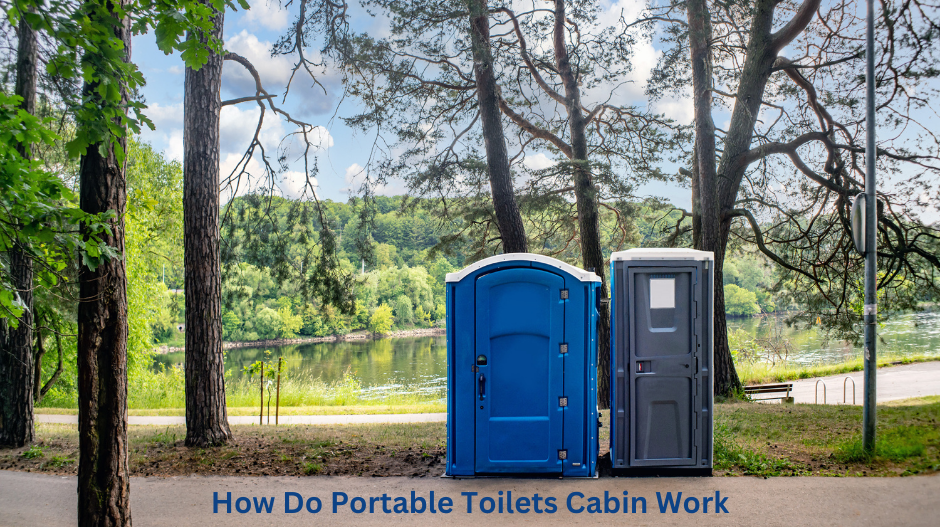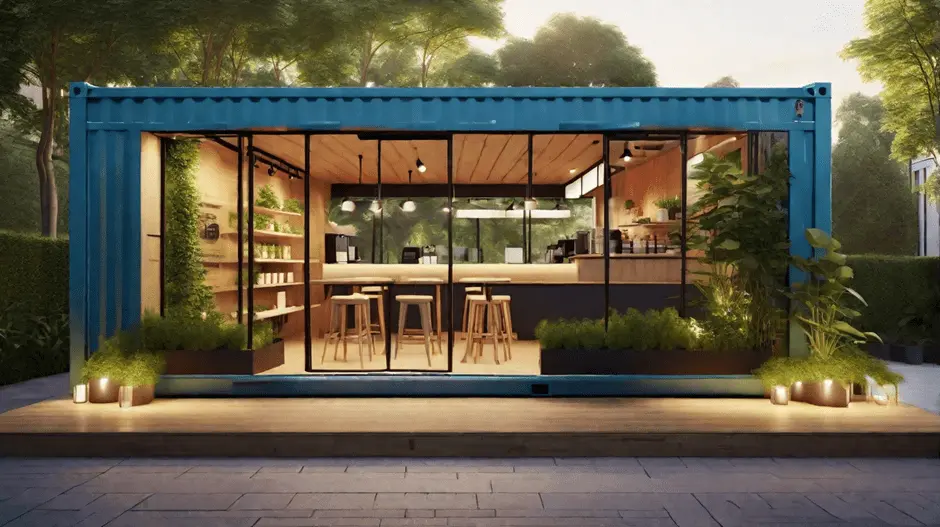Introduction

A portable toilet cabin, sometimes called porta-potties, chemical toilets or portable restrooms are closable units that include a tank with chemicals and do not require connection to the main water supply of a building. These units are widely utilized at construction sites, outdoors, camps, and other occasions that require areas to ease oneself but are not permanent.
How Do Portable Toilets Cabin Work
Basic Structure and Design
The portable toilet cabins are mostly made from Polyethylene, which is relatively light in weight, and water and easy to mobilize. The design is straightforward: a single unit contains a closet, a urinal, a tank, and a fan. The cabins are small and personal with just enough space to provide the facilities for a person to use on his or her own.
The cabin door normally has an iconic lock and a sign for determining if the toilet is available or not. The interior of the structure is usually characterized by a non-slip and easy-to-clean floor as it enhances hygiene as well as the safety of the users.
How Portable Toilets Work
A portable toilet employs a chemical flush system, thereby making it independent of piped electricity and a sewerage connection. Here's how they work:
a. The Holding Tank
The inner structure of a portable toilet has a holding tank, which is normally placed at the base of the toilet seat. This is a tank in which waste is stored before it can be transported out of the facility. The capacity of this tank depends on the model of the toilet but it is big enough to contain the wastes from many people for a period of, at least three days.
Initially, the holding tank of the portable toilet is filled with water and chemicals before the toilet is in use. These chemicals serve multiple purposes: They decompose solid wastes, minimize smell production, and check the breeding of bacteria. It consists of, blue dye for concealing the wastes, deodorants for masking the smell of the wastes, and enzymes or bacteria that act as catalysts for breaking down of the wastes.
When it is empty, cleaning is done and the holding tank is refilled with water and chemicals for use in the unit. This servicing could be on daily basis if the store is very busy, weekly or less depending on the traffic.
b. Cleaning
For instance, besides the holding tank being dumped, a portable toilet unit requires regular cleaning throughout the compartment or wherever it was placed. The interior part and its surfaces are washed and sprayed with disinfectants while the toilet bowl is cleaned by scraping. These cleaning activities include mopping of floors and restocking supplies such as toilet paper and hand sanitizers. Proper cleaning helps to keep the unit clean and germ-free so that the spread of germs is prevented.
Environmental and Hygiene Considerations
Temporary toilet facilities are created to be eco-friendly especially where ordinary sewage facilities are not available. This prevents pollution of the environment through the responsible treatment of chemicals and wastes produced in these units.
a. Waste Treatment Chemicals
The various types of chemicals used in portable toilets are made to dissolve waste and minimize smell. Most of the modern portable toilets contain chemicals that are environmentally friendly because they are recyclable and non-hazardous. Advanced systems, for instance, apply microbial treatment that assists in the breakdown of wastes in an environmentally friendly process.
b. Water Conservation
These types of toilets are also very efficient when it comes to conserving water. They do not require a constant water supply and use small quantities of water for flushing (where fitted with a flush system). This makes them particularly useful in areas where water resources are limited because they can be reusable depending on how they are used, and the limitations put on their use by lack of water.
c. Hygiene
To improve sanitation, there are hand washing containers with water tanks or dispensers with sanitizers in most portable toilets. These features can significantly minimize the risks of germ transmission especially when people are moving around in large numbers.
Innovations and Advancements
Over time portable toilets also have evolved along the development of technology. Contemporary units may comprise solar-powered lamps, foot pump type hand washing stalls, mirrors, and even air conditioning units in the more sophisticated models. Some of the portable toilets are also specially designed for wheelchair users; these come with ramps and extra space within the cabin.
a. High-Tech Portable Toilets
With recent technological advancements, what was once called ‘substandard’ portable toilets have been manufactured to be high-tech in some regions of the world to increase sanitation and user convenience. Such may be featureless flush and self-cleaning mechanisms, maintenance signals throughout the unit touchless, and signaling to the service providers that the unit requires frequent maintenance.
b. Sustainability Efforts
Portable toilets that are composting have also been invented in a bid to address the issue of sustainability where waste is decomposed naturally without any chemicals in order to produce plant fertilizer.
Conclusion
Sanitation is very important so that means portable toilet cabins are important where there are no normal washrooms available. This is certainly true given their chemical-based operation together with routine servicing to render it a dependable solution for any temporary sanitation requirement. With new technologies being introduced to the market, better, easier to use, and more friendly to the environment portable toilets will be seen in the future thus improving the health of the public.
